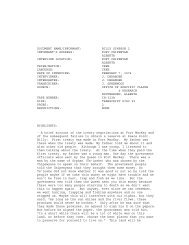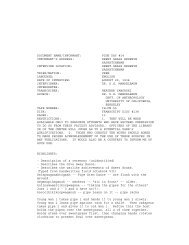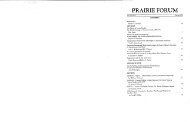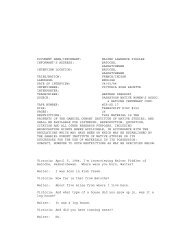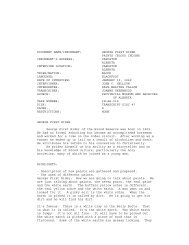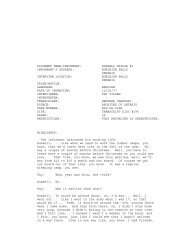Contents of It's not All in Your Head by Asmundson and Taylor
Contents of It's not All in Your Head by Asmundson and Taylor
Contents of It's not All in Your Head by Asmundson and Taylor
You also want an ePaper? Increase the reach of your titles
YUMPU automatically turns print PDFs into web optimized ePapers that Google loves.
elatively brief, rang<strong>in</strong>g from 8 to 16 sessions (Avia & Ruiz, 2005). <strong>Asmundson</strong> <strong>and</strong><br />
<strong>Taylor</strong> (2005) described CBT as a collection <strong>of</strong> techniques such as psychoeducation,<br />
cognitive restructur<strong>in</strong>g, relaxation exercises, <strong>and</strong> exposure with response prevention<br />
(ERP). Each technique will be described below. <strong>All</strong> <strong>of</strong> the <strong>in</strong>terventions are expected to<br />
be <strong>in</strong>fluenced <strong>by</strong> nonspecific treatment factors such as the expectations <strong>of</strong> the client <strong>and</strong><br />
placebo effects, the therapeutic alliance, <strong>and</strong> the credibility <strong>of</strong> the treatment. It is also<br />
expected that the <strong>in</strong>terventions will be provided after thorough medical <strong>and</strong> psychological<br />
assessments (<strong>Taylor</strong> et al., 2005). A thorough medical exam<strong>in</strong>ation would be provided <strong>by</strong><br />
a general practitioner (GP) or specialist to rule out biological disease as a cause <strong>of</strong> health<br />
anxiety symptoms (Bouman & Visser, 1998). A thorough psychological evaluation would<br />
be provided <strong>by</strong> a cl<strong>in</strong>ical psychologist or psychology practitioner to screen participants<br />
for mental conditions such as somat<strong>of</strong>orm, anxiety, <strong>and</strong> mood disorders.<br />
Cognitive therapy <strong>in</strong>volves alter<strong>in</strong>g catastrophic <strong>in</strong>terpretations <strong>of</strong> bodily<br />
sensations <strong>and</strong> health <strong>in</strong>formation; it is a key beneficial component <strong>of</strong> CBT for health<br />
anxiety (Furer & Walker, 2005). The cognitive components <strong>of</strong> CBT are effective because<br />
they help <strong>in</strong>dividuals to identify catastrophic thoughts <strong>and</strong> to replace them with more<br />
accurate appraisals (Furer & Walker, 2005). Cognitive therapy for health anxiety <strong>in</strong>cludes<br />
assessment <strong>and</strong> engagement, problem formulation, self-monitor<strong>in</strong>g, identification <strong>and</strong><br />
reattribution <strong>of</strong> negative automatic thoughts, modification <strong>of</strong> ma<strong>in</strong>ta<strong>in</strong><strong>in</strong>g factors,<br />
17



